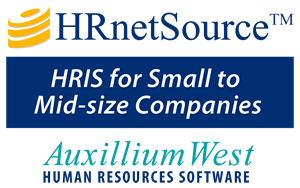Incentive
Compensation
Purpose of Process (see below how HRSource™ can help):
The purpose of an Incentive Compensation Program is to motivate and reward key employees for accomplishing individual performance goals established in accordance with the business targets of the organization and Company.
Recommended Steps in the Process:
- Top management develops long range strategic business goals
and annual business goals. Based on these goals, each employee
develops individual performance goals as part of the Performance Management process.
- To encourage the achievement of these goals, the Board of
Directors and top management may offer financial awards
(incentive compensation) to management and key individual
contributors who help the company achieve its goals.
- Determine the design parameters of the incentive compensation
plan:
- Participation.Typically, all top management participates. Then each top manager nominates key individuals who are crucial for, and have leverage on, the success of the organization. Typically 15% to 30% of employees participate in an incentive compensation plan, not including those directly involved with sales (See the Sales Compensation process).
- Incentive Plan Goals. Individual incentive plan goals come from the participants' Performance Management Plan and the company's annual or long range business goals. Including a mix of individual and company goals has the advantage of focusing the employee on achieving his/her individual performance goals (see Performance Management process), while working as a team member to achieve company goals. The higher level managers typically have a higher weighting on company goals, and lower weighting on individual goals. Lower level managers and individual contributors have a higher weighting on individual goals and lower on company goals, because they have less influence on the outcome of company goals than the high level managers. Larger companies may substitute organization (e.g. division) goals for company goals.
- Size of Target Awards. The target award of high level management typically equals a high percentage of their base salary. For example, the target award for the Chief Executive Officer is typically 50% to 100% of their base salary. The reason for the high target is because high level management has more influence over company performance than lower level managers. The target award of lower level participants can range from 10% to 20% of base salary. When setting incentive award targets, consider the company's base pay/variable compensation philosophy, what the company can afford to pay (given the various business outcomes), and the incentive award targets of other companies. The latter information can be obtained from various salary surveys (see Salary Survey process).
- Amount of Discretion. The Incentive Plan can be designed to allow the management a lot of discretion or little discretion in determining the size of participants' actual incentive award. Designing in discretion allows management to soften the impact that uncontrollable events may have on business performance. On the other hand, too much discretion will cause participants not to trust the plan. Also, for public companies that disclose pay programs, shareholders disprove of discretionary plans that provide rewards inverse to the current business performance or stock appreciation (see the sample incentive plan).
- Deferrals. Allowing participants to defer their
award can be a popular feature. By deferring the award, the
participant can defer their tax liability. Generally,
deferral elections must be made before the incentive plan
year begins. Consult your company's tax expert when
installing the deferral feature. (See the sample
deferral election form.)
- After establishing the plan parameters, each manager
establishes and documents incentive plan goals. (See sample Incentive Compensation Plan Worksheet.)
- Communicate company performance to plan participants (and to
all employees - see the Communication
Programs process) so they can estimate their incentive
plan performance.
- Conduct mid-year Performance Management reviews so
participants and their managers can discuss their incentive plan
performance (see Performance
Management process).
- The finance department analyzes and measures annual company
business performance.
- Conduct final Performance Management reviews, in which
participants and managers agree on the participant's
performance.
- Managers recommend incentive awards for each participant based
on company and individual performance results.
- Conduct a final audit of all recommended awards and submit to
the President for review and approval.
- Provide the award checks to the organization managers for
presentation to the participants.
- Maintain records on the incentive awards in the participant's
personnel file.
- Finance tracks deferred awards and earnings.
- Begin the process again for the next year.
Process Tips:
As the design and development of an Incentive Plan is complex and the payment of awards is costly to the company, it can be useful to obtain external assistance.
